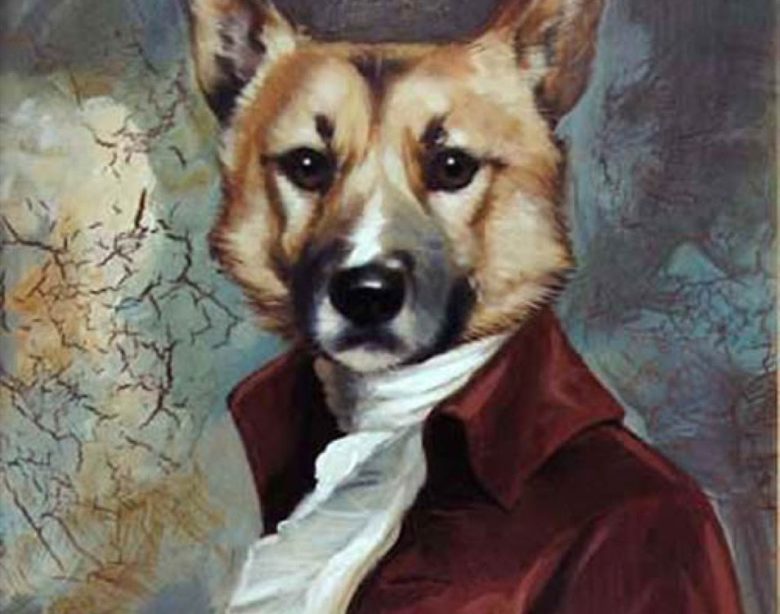Table of Contents
Pet portraits are beautiful because they help to celebrate the life of the pet. Pet portraits can help capture the joyous moments and expressions of today, or of a pet that has crossed Rainbow Bridge. Pet portraits are a special, unique and wonderful way to honor the bond that only a pet owner, the family, and the pet can understand. Painting a portrait can seem like a difficult or challenging task at first. It’s important to consider that there are many styles of pet portrait paintpup, ranging from realistic, to stylistic to even anime-style. Find what kind of style captures your eye, and what kind of style you are most comfortable with.
Gather Your Supplies
First you need to get the supplies. You can have a variety of paints. You should have a photo of the pet that you want to paint. You should also have access to a printer, and also some carbon copy tracing paper. You should have an art canvas or another kind of surface to paint upon. A recycled wooden plank would do. It’s best to treat the area with gesso first, especially if using wood, a porous surface, or any kind of acrylic paint. Gesso, when dried, provides ‘tooth’ (or a rougher area) for the acrylic to adhere to. It also offers a smoother application, You should have a good quality black marker, soft art pencils, paint brushes, and a paint palette to mix colors and paint from (as opposed to just using the paint from the tube, which can end up being wasteful.)
Paint Background and Decide on the Style
After you have gathered the supplies, you must decide on how you are going to paint the background. This step is easy if you are using acrylic, as acrylic dries relatively fast. If you are using oil paint, consider that oil paint sometimes takes weeks to dry. You can lessen the time to dry with oil paint if you use drying mediums or linseed oil. Keep your final pet image in mind. What color is the pet? What personality does the pet have? Do you want the image to be more abstract, realistic or a mixture of both? Keep this mind when creating the background, as you want to consider highlights, shadows and maybe even tones that match your home or favorite colors of the client who wants the pet portrait.
Print a Picture of the Pet
While that dries, find the favorite photo of the pet. Print the photo out in black and white. You can have a reference picture on your phone or tablet to note the color. The reason you want to print in black or white is so that you can see the color contrasts better, as well as any highlights or shadows. This part of the process can be a bit time consuming, only because you have to be careful that the picture doesn’t print too dark. If it does, you’ll have to edit the picture on the computer software, tablet, or phone until you can see the iris of the pet. This is to prevent losing many of the details. Sometimes with black and white prints, the darker areas might blend together. Make sure that when cropping the picture of the pet that the pet takes up almost the entire page. You can check this on the ‘print preview’ option before you print. Something that you might want to do as well is have the picture, on the editing software, flipped horizontally so that the final image is what the eyes sees naturally, as opposed to the reverse image.
Transfer the Picture on the Canvas
At this point, you want to outline your photo and then transfer it to the canvas. You can either carefully trace the image using the carbon copy paper directly on the dried canvas. Another option is to trace the lines, shadows and everything you want displayed in your picture on the printout itself. Make sure to use the soft graphite pencil. Then, when you have finished, place the outline ‘face down’ on the canvas and use the end of a paint brush or a hard surface to rub the back page. This will transfer the graphite on to the dried paint. Pencils that are considered ‘hard’ won’t transfer as easily, so keep that in mind. You can use tape to secure the edges as you transfer using this method, or transfer using the carbon copy paper method.
Add Finishing Touches
At this point, you can use the marker to redraw the pencil lines to put more emphasis on the lines. Or you can use acrylic paint right away if you want to use a less stylized approach. Color the lines, color inside the lines. Be creative with color, or use the photo reference you have for more realistic colors. Add final touches to the dried painting, and again, let it dry. You can add white highlights to the eyes, or create a different color for the eyes to contrast the painting.




